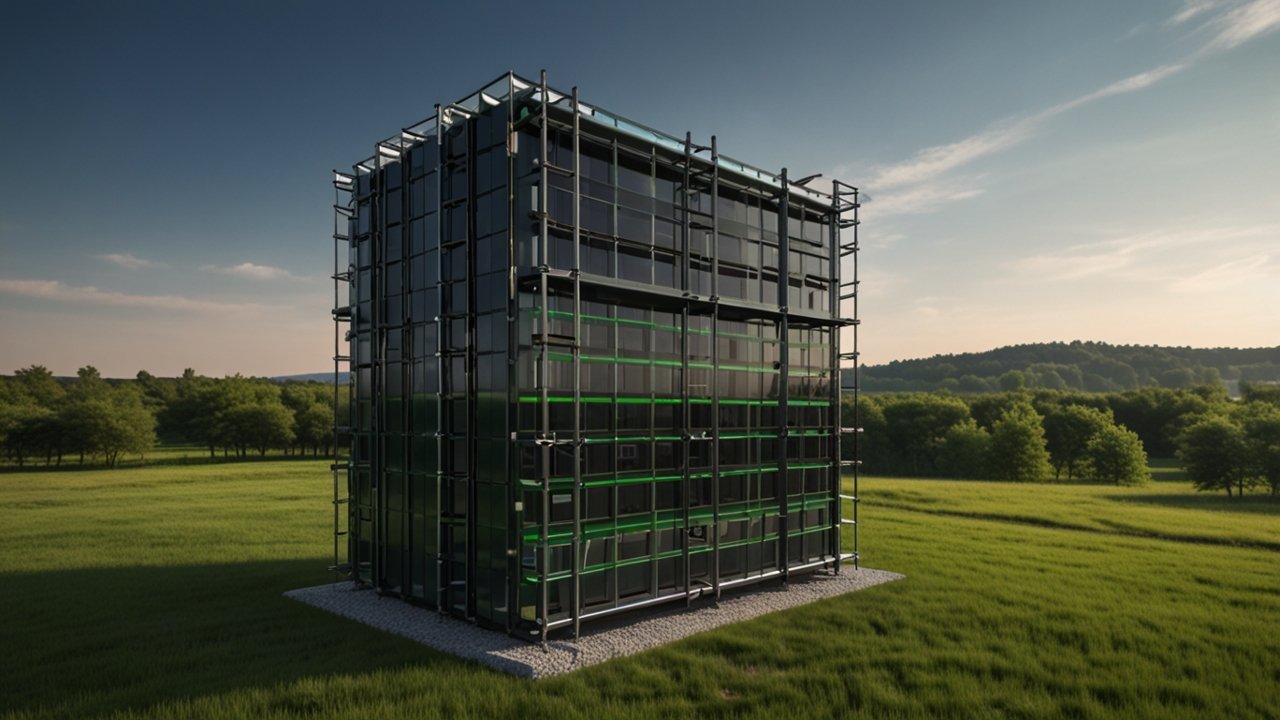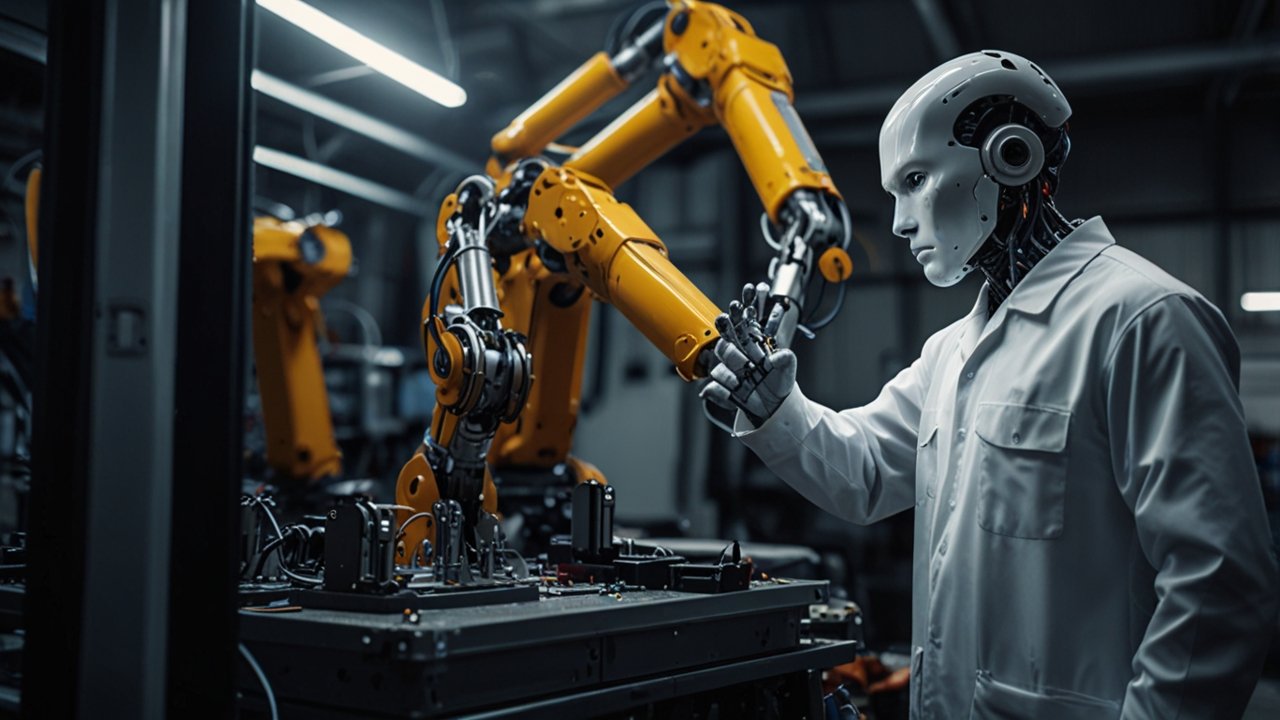Artificial Photosynthesis: 6 Vital Benefits
Artificial Photosynthesis is emerging as one of the most transformative innovations in sustainable technology. Inspired by the natural process in plants, scientists have engineered systems that replicate this vital mechanism to convert sunlight, water, and carbon dioxide into energy-rich fuels and chemicals. This breakthrough is redefining how we view renewable energy and environmental restoration.
In recent years, the technology has evolved from a theoretical concept to lab-scale prototypes and pilot projects, promising to revolutionize energy systems globally. With countries investing in research and development, Artificial Photosynthesis is becoming a critical solution in the quest for carbon-neutral energy generation. The integration of advanced materials and innovative designs continues to push the boundaries of what is possible.
📑 Table of Contents
- Introduction to Artificial Photosynthesis
- Evolution and History of Artificial Photosynthesis
- How Solar Fuel Enhances Artificial Photosynthesis
- CO2 Conversion Systems and Their Applications
- Real-World Case Studies of Artificial Photosynthesis
- Chemical Energy Storage in Modern Artificial Photosynthesis Solutions
- Future Trends in Artificial Photosynthesis and Beyond
- Unlocking New Horizons: Artificial Photosynthesis Exposé
- FAQ
- Conclusion
This article explores the evolution, methods, case studies, and future trends of Artificial Photosynthesis. Throughout the discussion, you will find engaging examples and thought-provoking questions. For more information on this emerging field, visit Trending Topics.
Introduction to Artificial Photosynthesis
Discover how modern innovations echo nature’s genius with Green Technology solutions transforming energy production.
Overview and Concept
The concept of Artificial Photosynthesis draws directly from nature by imitating how plants capture sunlight and convert it into chemical energy. Researchers utilize semiconductor materials and advanced catalysts to initiate reactions similar to those in chloroplasts. The idea is simple yet revolutionary: harness abundant natural resources—sunlight, water, and carbon dioxide—to produce fuels that can be stored and used later.
Laboratory studies dating back to the mid-20th century gradually shifted toward more practical implementations as scientists began incorporating nanotechnology and inventive material design. Today, the field enjoys rapid growth, with early prototypes leading to market-ready pilot projects. Have you ever wondered how mimicking nature can create sustainable energy solutions?
This breakthrough is bridging the gap between clean energy production and environmental conservation by directly converting CO₂ into useful chemical forms. Innovations in catalyst design and photoelectrochemical cells are pivotal components of this technology, showcasing immense potential in reducing our uptake of fossil fuels.
Key Components and Inputs
The primary inputs in these systems are sunlight, water, and carbon dioxide, which together form the backbone of this process. Semiconductors such as titanium dioxide and carbon nitride are vital for absorbing sunlight, while catalysts are required to speed up the chemical reactions. The integration of these materials mirrors the synergy observed in natural photosynthesis, leading to effective energy storage strategies.
Breakthroughs in materials science have led to engineered catalysts that improve reaction efficiency and durability. For instance, innovations stemming from research at institutions like 8MSolar overview demonstrate significant progress toward scalable and stable systems. Can you imagine a future where simple ingredients power entire communities?
Each component plays a unique role, and the ongoing collaboration between disciplines is driving rapid optimization in efficiency. The reliability of these inputs is crucial for pushing the technology from lab settings to industrial applications.
Evolution and History of Artificial Photosynthesis
The journey of Artificial Photosynthesis is intertwined with advancements in Energy Efficiency research that have continuously pushed the boundaries of what we can achieve with natural processes.
Milestones and Breakthroughs
Historically inspired by natural photosynthesis, early models attempted to mimic plant reactions using rudimentary catalysts and inefficient materials. Over the decades, significant milestones have redefined the progress of this field. Notable breakthroughs include the development of artificial leaves that match the efficiency of natural counterparts and the creation of bio-hybrid systems, which blend biological elements with synthetic materials.
One landmark achievement was the design of metal-organic frameworks (MOFs) that enable precise CO₂ capture and conversion. Institutions worldwide, including research groups in North America, Europe, and Asia, have celebrated these steps forward. Did you know that some systems have achieved over 99% selectivity in converting CO₂ into useful chemicals?
These innovations have spurred global investment, accelerating the transition from theoretical concepts to real-world prototypes. For additional insights, check out this ScienceDaily summary of recent developments.
Research and Development Timeline
The timeline of Artificial Photosynthesis is marked by a steady progression from early conceptual studies to sophisticated experimental systems. Research in the 1960s and 1970s laid the groundwork; however, the real momentum picked up in the last two decades. Investments in nanotechnology and material science have been critical to overcoming initial technical limitations.
In recent years, breakthroughs such as the development of efficient photocatalytic systems and photoelectrochemical cells have supported larger-scale demonstrations worldwide. Funding from government and private sectors is boosting further research, leading to noticeable improvements in catalyst performance and operational stability. Are you curious about how these advancements shape our energy future?
Detailed market reports from sources like Precedence Research market data emphasize that projections for this field continue to vary positively as research accelerates.
How Solar Fuel Enhances Artificial Photosynthesis
Modern advancements in Cutting-Edge Technologies are enabling the effective use of solar fuel to boost system performance.
Role of Solar Fuel in Process Enhancement
Solar fuel technology plays a crucial role in supplementing the energy conversion process in Artificial Photosynthesis. It effectively stores the energy received from sunlight in chemical bonds, stabilizing it for later use. This dual function of energy capture and storage significantly underpins the technology’s potential to act as an alternative to traditional energy storage systems.
By capitalizing on the abundant energy provided by the sun, researchers have refined methods to convert this energy into storable forms like hydrogen or even hydrocarbons. The fusion of solar and chemical processes creates a robust mechanism that can operate even when there is no sunlight. Have you considered how energy storage is essential for reliable renewable power?
This interplay between energy capture and storage is enhanced by advanced photocatalysts, whose design was influenced by studies published on Phys.org hydrogen insight. The research not only establishes a more resilient system but also paves the way for decentralized energy production models.
Innovative Photocatalytic Materials
The success of Artificial Photosynthesis greatly depends on innovative photocatalytic materials. These materials, such as advanced carbon nitride variants, offer superior performance in water splitting and CO₂ reduction. Their high stability and reactivity under sunlight enable the efficient conversion process necessary for reliable chemical fuel synthesis.
Recent projects highlight the use of bio-hybrid catalytic systems where biological enzymes are combined with engineered nanomaterials. Such synergy leads to increased selectivity and tunability in the reduction reactions. Are you intrigued by how materials science shapes modern energy systems?
Breakthroughs in photocatalyst improvement have significantly reduced energy losses during conversion. Research initiatives worldwide are continuously testing these materials in various environmental conditions to ensure broad applicability and long-term durability.
CO2 Conversion Systems and Their Applications
Exploring advanced Innovative Solutions in CO₂ conversion paves the way for impactful industrial and environmental applications.
Techniques for CO₂ Conversion
CO₂ conversion systems integrate processes that transform captured carbon dioxide into valuable chemicals. Various methods have been developed, including photocatalytic reduction and photoelectrochemical cells. These processes use light energy to drive chemical reactions that convert CO₂ into fuels such as ethylene and propane.
For example, research from the University of Michigan demonstrated the efficient conversion of CO₂ into ethylene—a key industrial chemical. This breakthrough offers substantial potential for reducing greenhouse gas concentrations while producing market-friendly chemicals. Does this innovative approach inspire you to think about how energy from waste can be utilized?
Scientists are also focusing on the scalability of these technologies by optimizing catalysts and reaction conditions. Ongoing research is making CO₂ conversion increasingly efficient, opening a wide range of industrial applications that promise to lower our environmental footprint.
Industrial and Environmental Applications
The applications of CO₂ conversion extend far beyond energy generation. In industrial settings, converting CO₂ into liquid fuels or key chemicals reduces dependency on fossil-derived feedstocks. These approaches contribute to both carbon capture and chemical production, leading to a significant decrease in overall emissions.
In agriculture, research indicates that CO₂ conversion technologies can reduce the need for large areas of farmland by providing alternative means to boost crop yields in controlled environments. In environmental remediation, these systems help mitigate the effects of climate change by lowering atmospheric CO₂ levels. Have you noticed how innovative applications can reshape our economy and ecosystem?
Industry leaders are actively exploring pilot projects across multiple continents, aiming to integrate these systems with existing infrastructures. The promise of revolutionizing energy and chemical production continues to drive investment and research globally.
Real-World Case Studies of Artificial Photosynthesis
Case studies emerging in the field illustrate significant contributions from Tech Developments that reinforce the practical viability of these systems.
Case Studies from the Americas and Europe
In North America, studies from the University of Michigan have shown how Artificial Photosynthesis can effectively convert CO₂ into valuable products like ethylene. Similarly, the University of Illinois has developed techniques to produce liquefiable fuels like propane using gold nanoparticle catalysts. These examples confirm the feasibility of using renewable resources for large-scale energy production.
Across Europe, research institutions have embarked on similar projects. Chemists in Germany have developed systems that convert CO₂ into hydrogen, showcasing not only the energy storage potential but also the integration with green hydrogen production processes. These developments indicate the breadth of innovation across regions.
Have you experienced a moment where real-world innovation changed your perspective on green energy? Consider how these breakthroughs bring us closer to a sustainable industrial future. For more detailed information, explore the research showcased by Uni Würzburg research.
Insights from Asia and Australia
Asian research initiatives have also contributed significantly, particularly from countries like India, Japan, and South Korea. For instance, at the Jawaharlal Nehru Centre for Advanced Scientific Research (JNCASR), a MOF-based catalytic system has achieved over 99% selectivity in converting CO₂ to CO. This system’s stability under sunlight conditions demonstrates outstanding potential for widespread use.
Meanwhile, research institutions in Australia are adapting Artificial Photosynthesis for both energy and agricultural applications. These projects focus on tailoring solutions to local environmental conditions, ensuring that efficiency is maintained despite varying climate challenges. Have you ever considered how regional adaptations can drive technological resilience?
These case studies reveal that while the technology is advancing globally, tailored approaches are essential for success in diverse conditions. The collaboration across continents underscores the universal appeal and necessity of these systems.
Chemical Energy Storage in Modern Artificial Photosynthesis Solutions
Advances in Chemical Energy Storage
Modern approaches to Artificial Photosynthesis emphasize chemical energy storage as an integral part of the conversion process. The stored energy can later be used as a backup to traditional renewable sources. This coupling of energy conversion and storage provides a continuous energy supply, especially when sunlight is not available.
Innovations in storage chemistry, including advanced catalysts and electrode designs, are enhancing the reliability of these systems. Recent breakthroughs have demonstrated that efficient storage techniques can boost overall system resilience. Are you interested in how these technological improvements transform intermittent renewable energy into a continuous power source?
Scientific studies have underscored these developments, and research shows promise in achieving high energy densities with minimal losses. The scientific community continually explores optimized materials that enhance both conversion and retention of solar energy.
Integration with Renewable Systems
Integrating chemical energy storage solutions into existing renewable systems ensures that energy availability remains constant. Coupling Artificial Photosynthesis with solar panels or wind turbines creates an ecosystem where surplus power can be chemically stored for later use. This integration reduces the dependency on fossil fuels and improves grid stability.
Notable progress in combining these systems can be seen in recent pilot projects that emphasize modularity and decentralized energy production. Energy produced by these systems supports local fuel generation, further enhancing resilience in remote areas. How do you think integrating these storage solutions might change the future of renewable energy?
The approach not only makes efficient use of natural resources but also lays the groundwork for a more sustainable and secure energy future. Ongoing research continues to bridge the gap between isolated energy systems and seamless grid operations.
Future Trends in Artificial Photosynthesis and Beyond
Market Projections and Growth Forecasts
The market projections for Artificial Photosynthesis indicate robust growth over the next decade. It is anticipated that the market will triple in value by 2034, driven by breakthroughs in catalyst design and system integration. The gradual commercialization of these solutions is witnessing positive trends globally.
Investment from both public and private sectors is fueling rapid development, and many pilot projects are now transitioning to larger-scale deployments. Studies from Precedence Research market data confirm that the technology’s economic viability is improving year on year. Have you thought about how continuous innovation in this field might reshape our energy infrastructure?
Investors are particularly interested in the scalability and modularity of these systems, which promise decentralized production and local fuel generation. This momentum is building a solid foundation for future commercial success, making Artificial Photosynthesis a potentially disruptive technology in the renewable energy market.
Sustainability and Policy Considerations
Future trends in this sector are heavily influenced by sustainability practices and policy developments. Governments worldwide are crafting frameworks that encourage the integration of green technologies into existing energy policies. These regulations will play a crucial role in determining the pace of adoption and scaling of Artificial Photosynthesis.
Policy initiatives that promote carbon capture and environmental restoration are reinforcing the market’s growth. Collaborative international efforts continue to shape standards and best practices, ensuring that technological progress aligns with environmental goals. Do you feel that policy support is as important as technological innovation in ensuring a sustainable future?
As research progresses, sustainability considerations become more central, influencing everything from material selection to system design. The balancing of economic incentives with environmental needs will likely accelerate the transition toward carbon-neutral energy systems.
Unlocking New Horizons: Artificial Photosynthesis Exposé
This section explores a realm of possibilities with an approach that transforms light, water, and a key gas into compounds bound to reshape our energy landscape. Imagine a method that harnesses nature’s way of converting a powerful energy beam into a resource that can be stored and mobilized when necessary. Researchers have meticulously designed mechanisms that capture subtle energy and transform it, enabling minute amounts of a gas to be repurposed into chemicals of industrial significance.
The journey has been filled with creative engineering and unexpected breakthroughs. Innovations in material science have led to the development of efficient conversion processes, allowing for a sustainable cycle of energy storage and release. In laboratory environments, prototypes have demonstrated that it is possible to attain remarkable precision in chemical conversion, ensuring that waste is curtailed and productivity enhanced. Several pioneering studies support the notion that reimagining conventional energy methods may offer entirely new ways to power our world.
Furthermore, small-scale experiments have paved the way for systems designed to operate under diverse environmental conditions. The collaborative efforts of multidisciplinary teams have enabled a leap from theoretical exploration to practical application, uncovering a future where energy management is redefined. Researchers express optimism about the real-world viability of these systems, suggesting that localized units might offer unprecedented flexibility and efficiency. This innovative perspective promotes the idea that future energy production could become adaptable, decentralized, and remarkably clean.
The discussion leaves us pondering the possibility of a paradigm shift in energy narratives. It is not merely about capturing available resources but transforming them into assets that support a resilient society. Such inventive mechanisms invite us to consider a thoughtful evolution in energy science, where progress and sustainability go hand in hand.
FAQ
What is Artificial Photosynthesis?
Artificial Photosynthesis is a technology that mimics the natural process of photosynthesis to convert sunlight, water, and carbon dioxide into chemical energy. It is designed to produce renewable fuels and chemicals, offering a sustainable alternative to fossil fuels.
How did Artificial Photosynthesis develop over time?
The field has evolved from early laboratory experiments in the mid-20th century to advanced pilot projects today, driven by breakthroughs in materials science, nanotechnology, and catalyst development. Global investment and interdisciplinary research have significantly advanced its capabilities.
What role does solar fuel play in this technology?
Solar fuel is critical as it stores the energy captured from sunlight in chemical bonds, ensuring a continuous supply of renewable energy even when sunlight is not available. This integration enhances the overall efficiency of the process.
Can CO₂ conversion mitigate climate change?
Yes, converting CO₂ into valuable chemicals not only reduces greenhouse gas emissions but also provides an additional incentive for carbon capture, supporting both environmental and industrial benefits.
What future trends are expected in Artificial Photosynthesis?
Future trends include higher market adoption, improved scalability, integrated energy storage, and stronger policy support. These advancements are anticipated to drive rapid commercial deployment and widespread use in the renewable energy sector.
Conclusion
In conclusion, Artificial Photosynthesis stands at the intersection of nature-inspired design and groundbreaking technology. By mimicking the efficiency of plants, this innovative process demonstrates how we can achieve sustainable energy production while reducing environmental impact. The journey from initial research to advanced prototypes has opened many avenues for integrating this technology into our existing infrastructure.
From advancements in solar fuel and improved CO₂ conversion techniques to real-world case studies across continents, the potential for large-scale energy transformation is enormous. As research continues and policies evolve, your role—as an engaged and informed reader—will be crucial in driving this sustainable revolution forward. Have you experienced a moment when a breakthrough made you rethink renewable energy?
For more information on the latest developments in this field, feel free to Contact us and share your thoughts. Engage with our community and help spread the word about these vital benefits.




















Leave a Reply